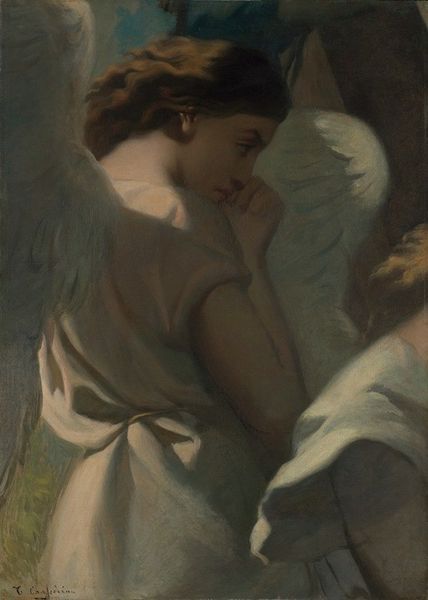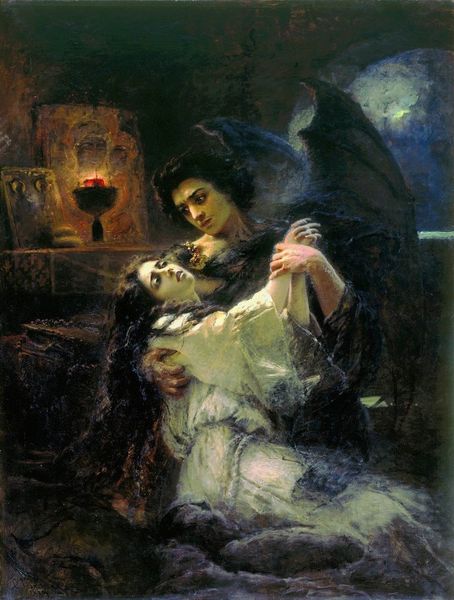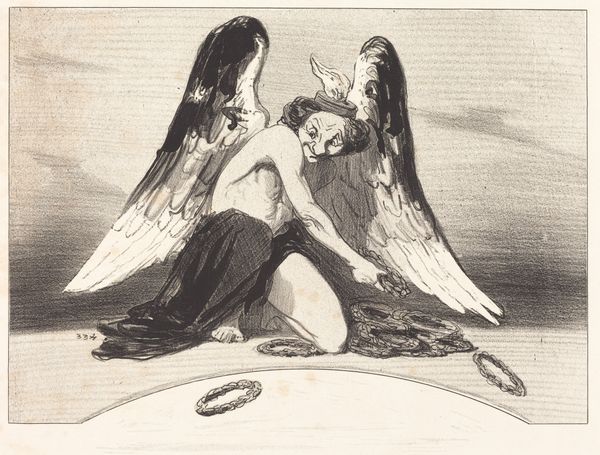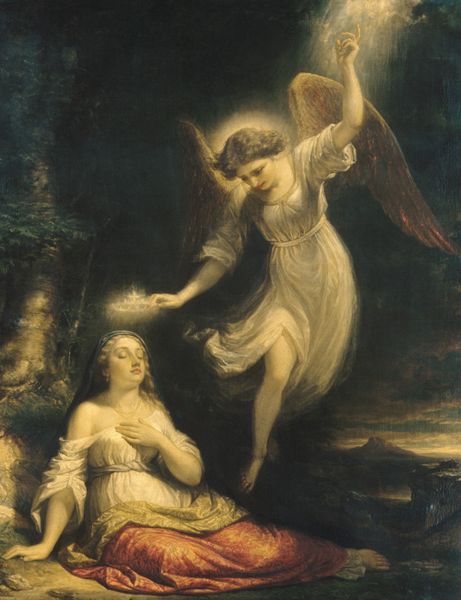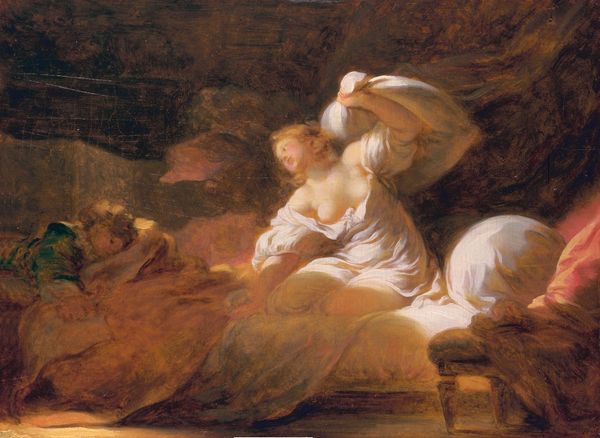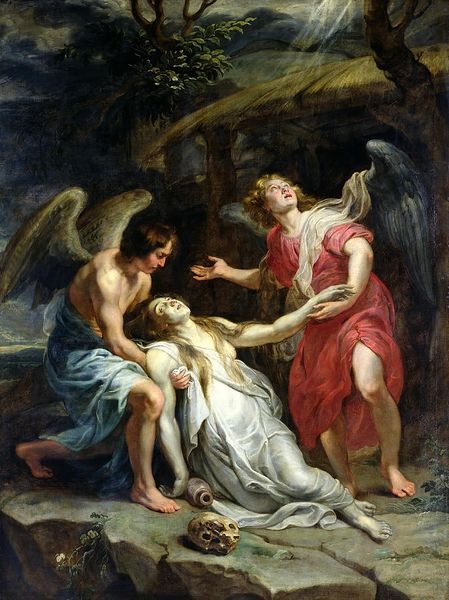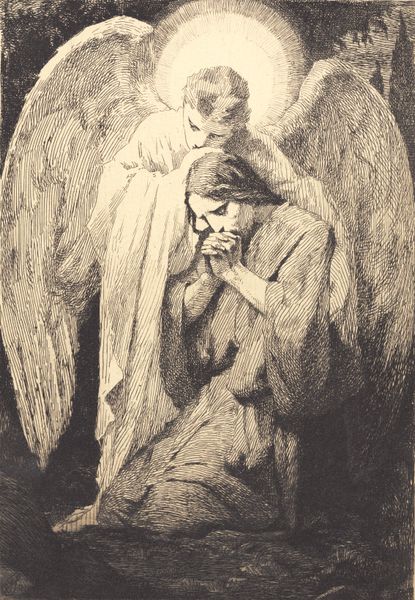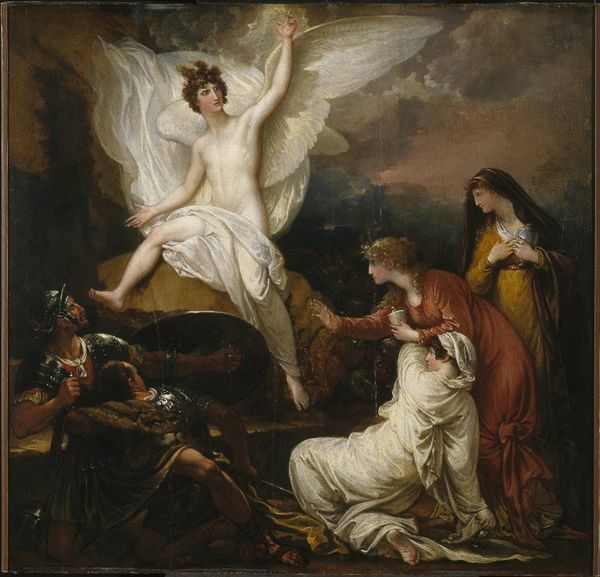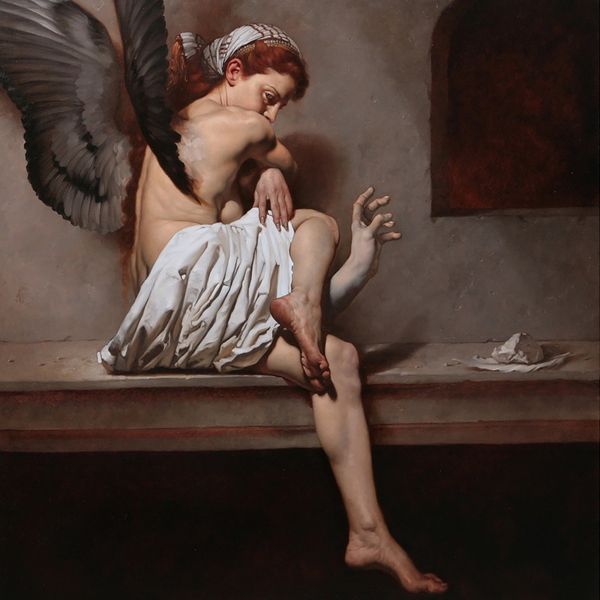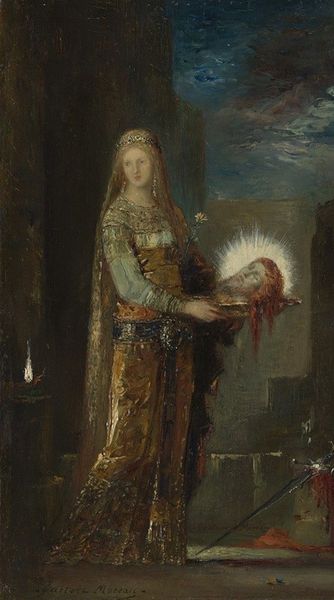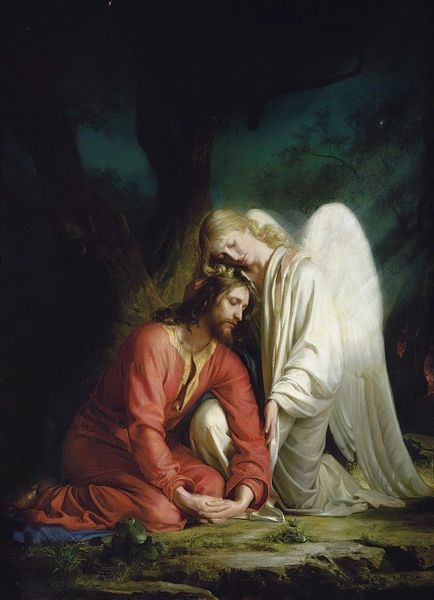
painting
#
allegory
#
narrative-art
#
painting
#
figuration
#
romanticism
#
mythology
Copyright: Public Domain: Artvee
Curator: I find it incredibly haunting; the stark contrast of the pale maiden and the ominous, winged figure immediately sets a chilling tone. What's your initial impression? Editor: I see a meticulously crafted image, no doubt oil on canvas given the time, with significant labor involved in building up those tonal shifts from the velvety darkness of death’s cloak to the sheer white of her gown. Curator: Precisely. The work we’re looking at is “Death and the Maiden” by Horace Vernet, painted in 1841. It presents a popular Romantic theme—the confrontation with mortality—through an allegorical lens, positioning Death as a tangible presence. Consider how death, a figure often represented as male, interacts with the maiden, a figure typically coded to portray female sexuality, purity and submission to her prescribed fate. How might we understand Vernet's engagement with these themes given that Vernet created paintings sympathetic to Napoleon Bonaparte during the Bourbon Restoration, the period of French history immediately after Napoleon's defeat? Editor: Absolutely, we must place the painting within Vernet’s practice as a whole to contextualize his practice. You’re right that his artistic production occurred amidst social, economic, and technological changes. In order to continue the financial gains made by painting propaganda supporting Bonaparte and imperial expansion, Vernet may have decided to pursue new types of painting that would sell better, for example images that had universal, and broadly, acceptable thematics. Vernet's choice of allegory offered him more sales since allegories require the work to "work" for their patron - decoding their meanings to "prove" they appreciate it and align with the ideology communicated within it. What about the gold on display--a gilt chair on the upper left or perhaps even gold trim within the religious image on the upper right? Surely, such fine materials underscore the luxury and the patronage from which the image originated. Curator: It's also striking how Vernet complicates the simple allegory. Death appears almost reluctant, sorrowful even. His head is bowed, perhaps mourning the taking of this young life. Meanwhile, the maiden points to heaven as if surrendering but with resolve, her spirituality providing a form of agency within her dying moments. Editor: Yes, look closely at the process involved in painting Death's wing – the way he allows those fluid dark pigments to blur into each other implies, conceptually, a sense of mourning and inevitable passing into death itself. The technique supports the somber subject matter, wouldn’t you say? It is a commercially effective representation of mortality since many paintings and prints made at this time dealt with human remains after medical breakthroughs to study corpses to dissect for educational purposes came to light, becoming a symbol for fear and decay. Curator: This analysis offers rich perspectives for how the symbolic meaning of Vernet’s subject may operate within much larger contexts. Understanding his visual production through the history and the materiality involved deepens our engagement. Editor: Indeed; considering the intersection of the materials, themes, production and contemporary sociopolitical landscapes, this painting has a great deal to say about patronage, social status, and cultural shifts during Vernet’s lifetime.
Comments
No comments
Be the first to comment and join the conversation on the ultimate creative platform.

